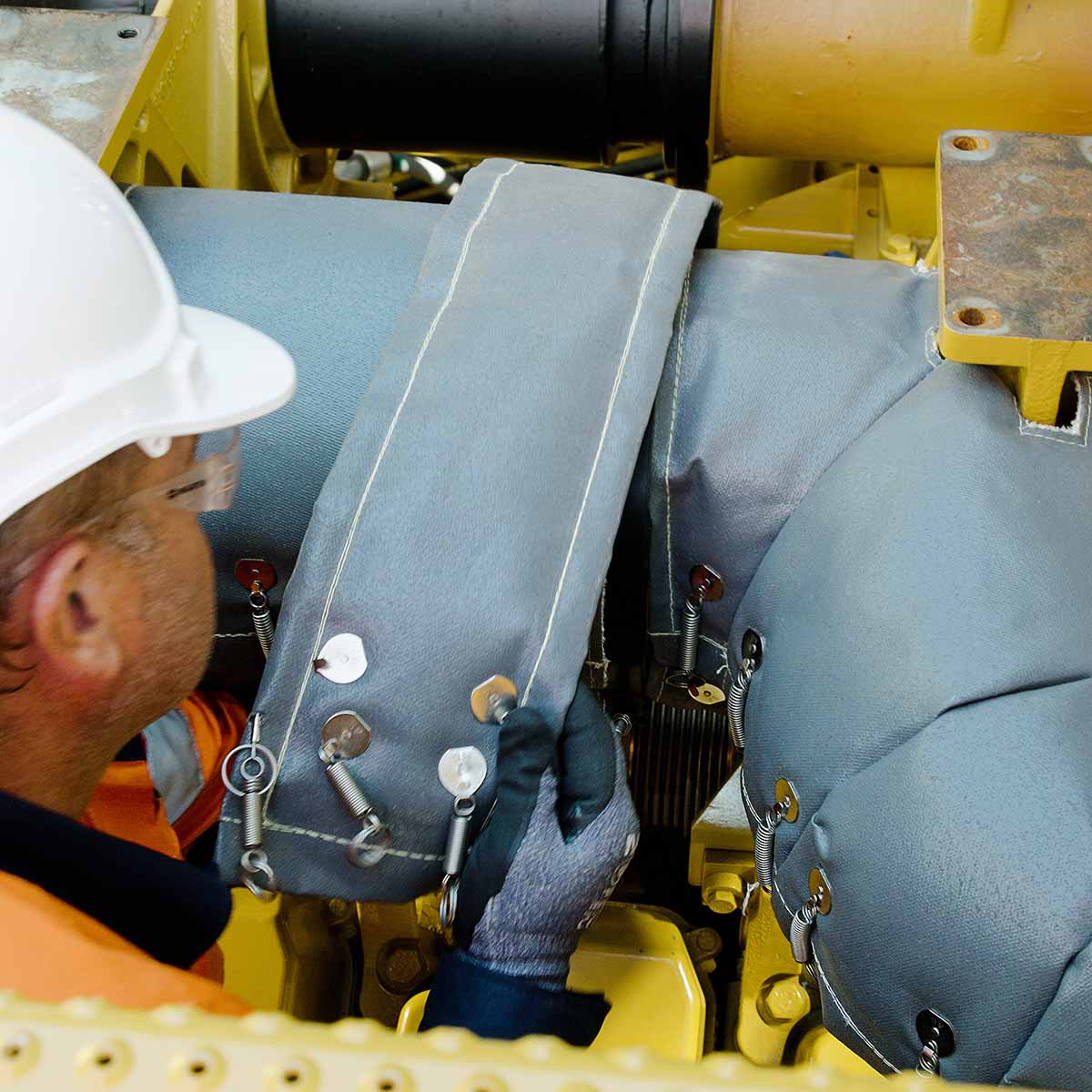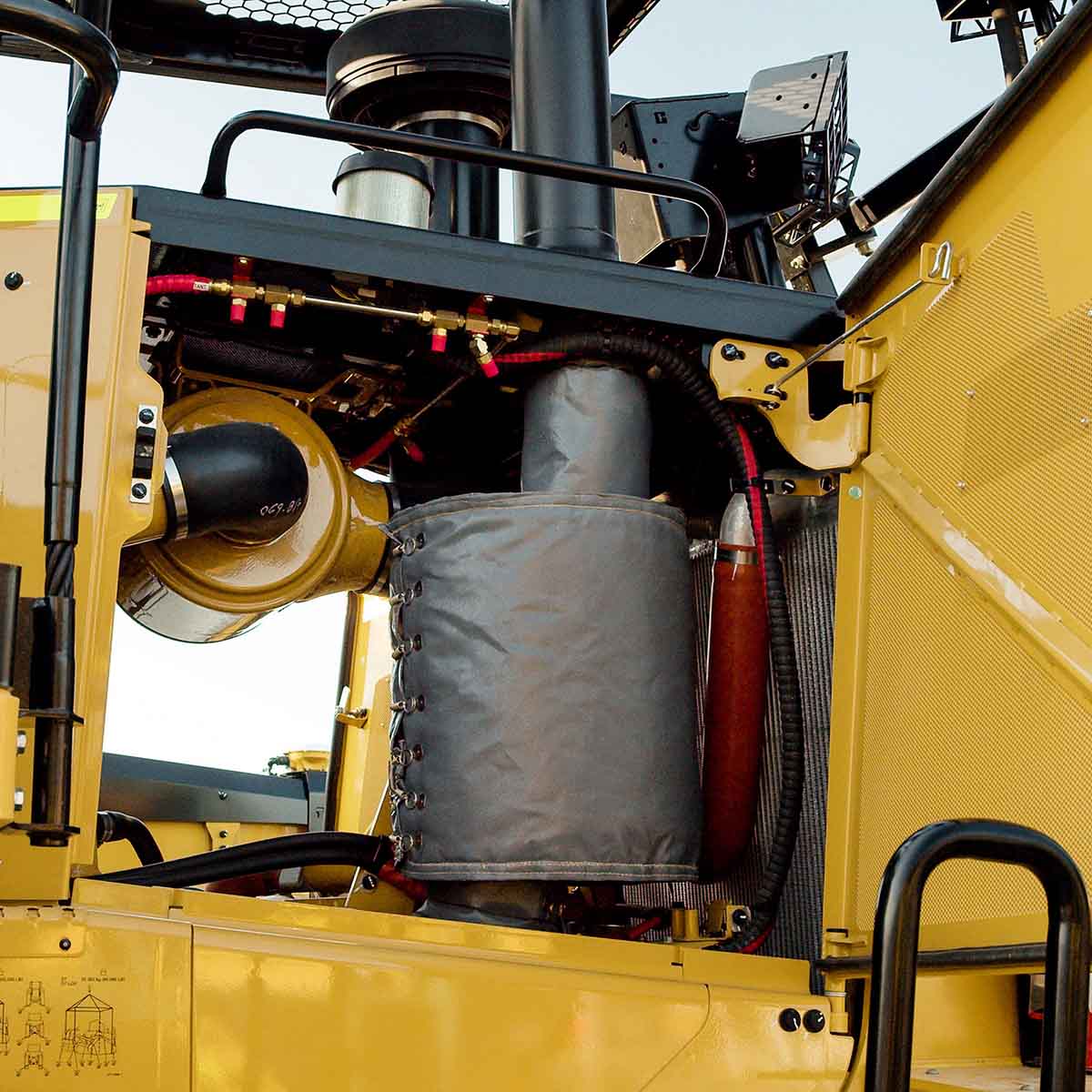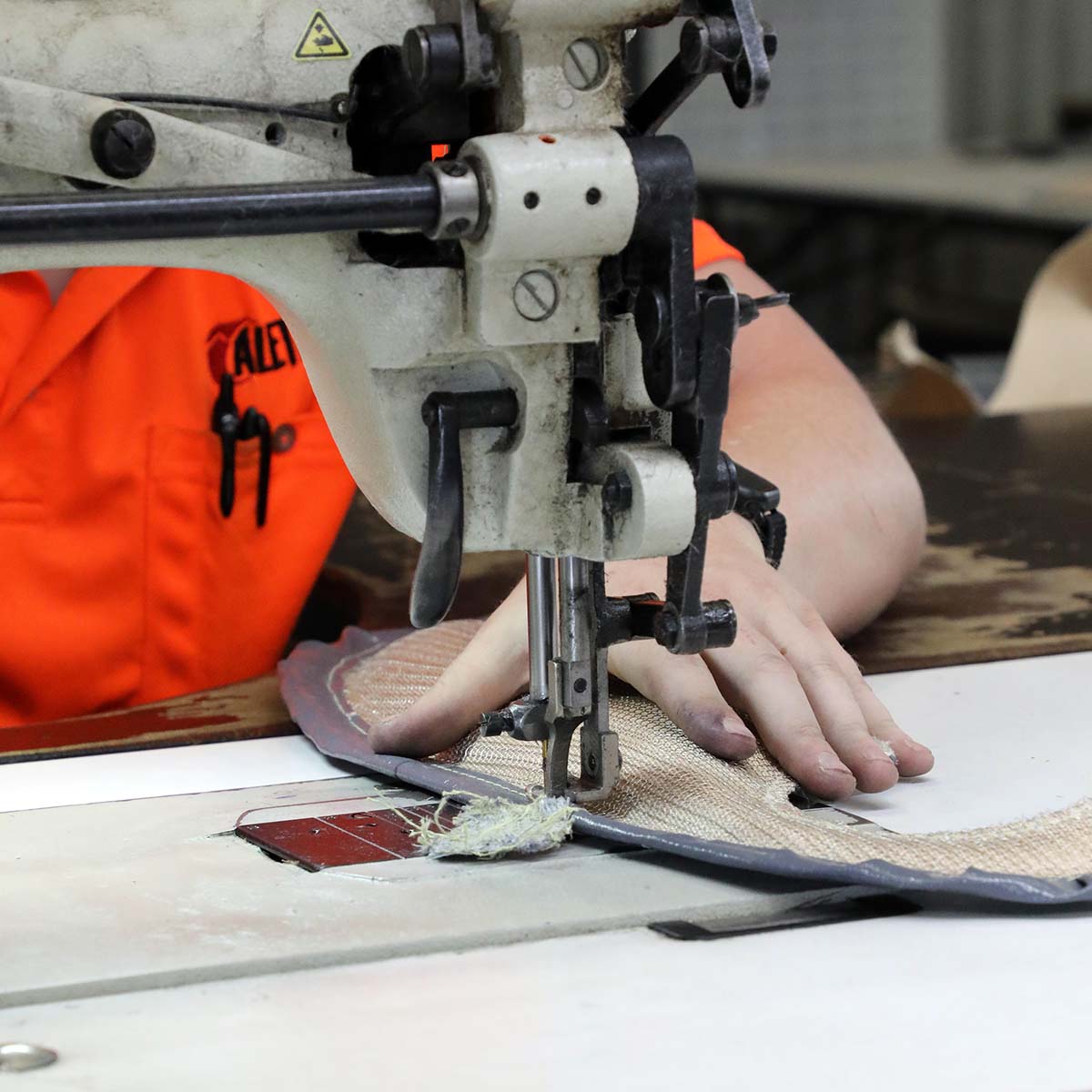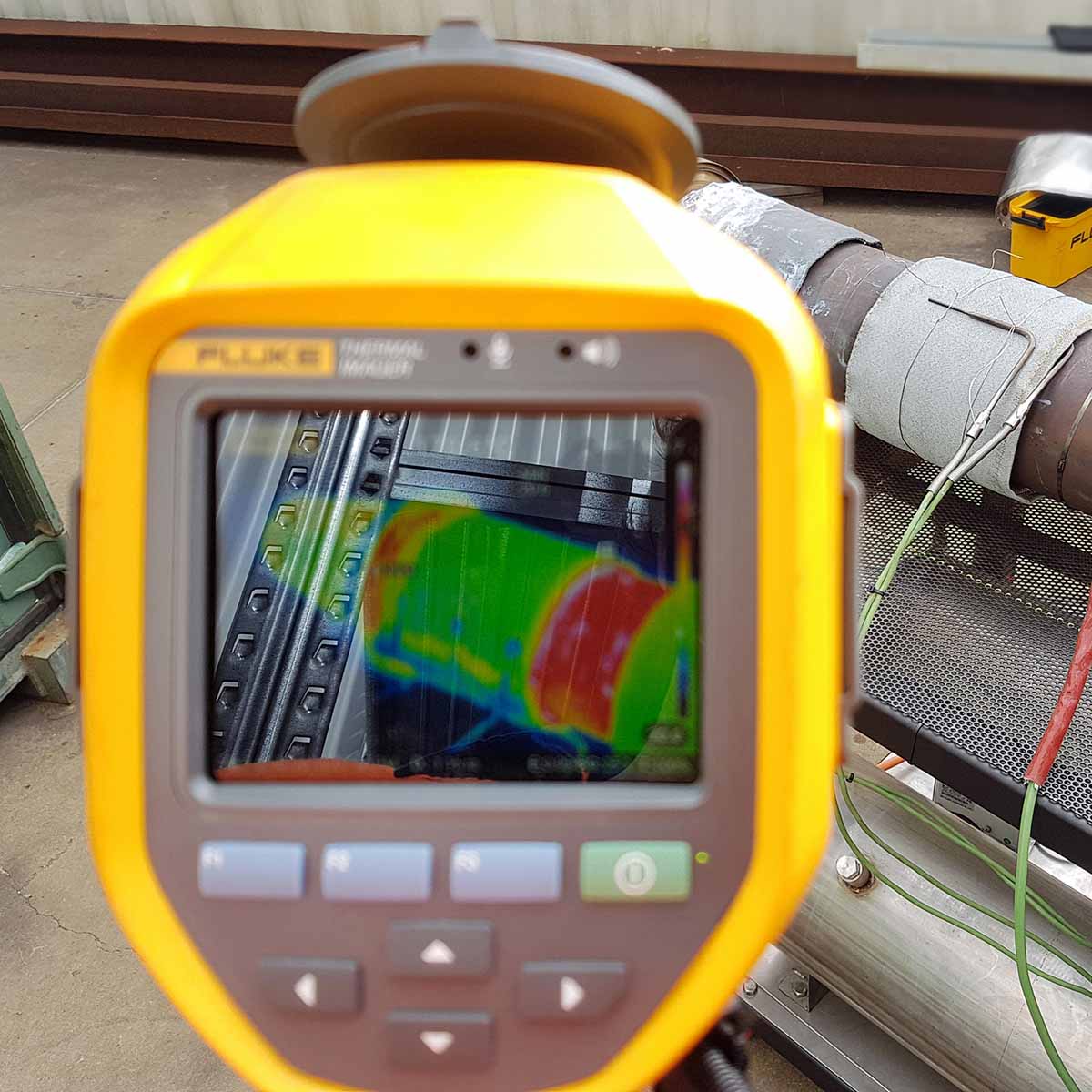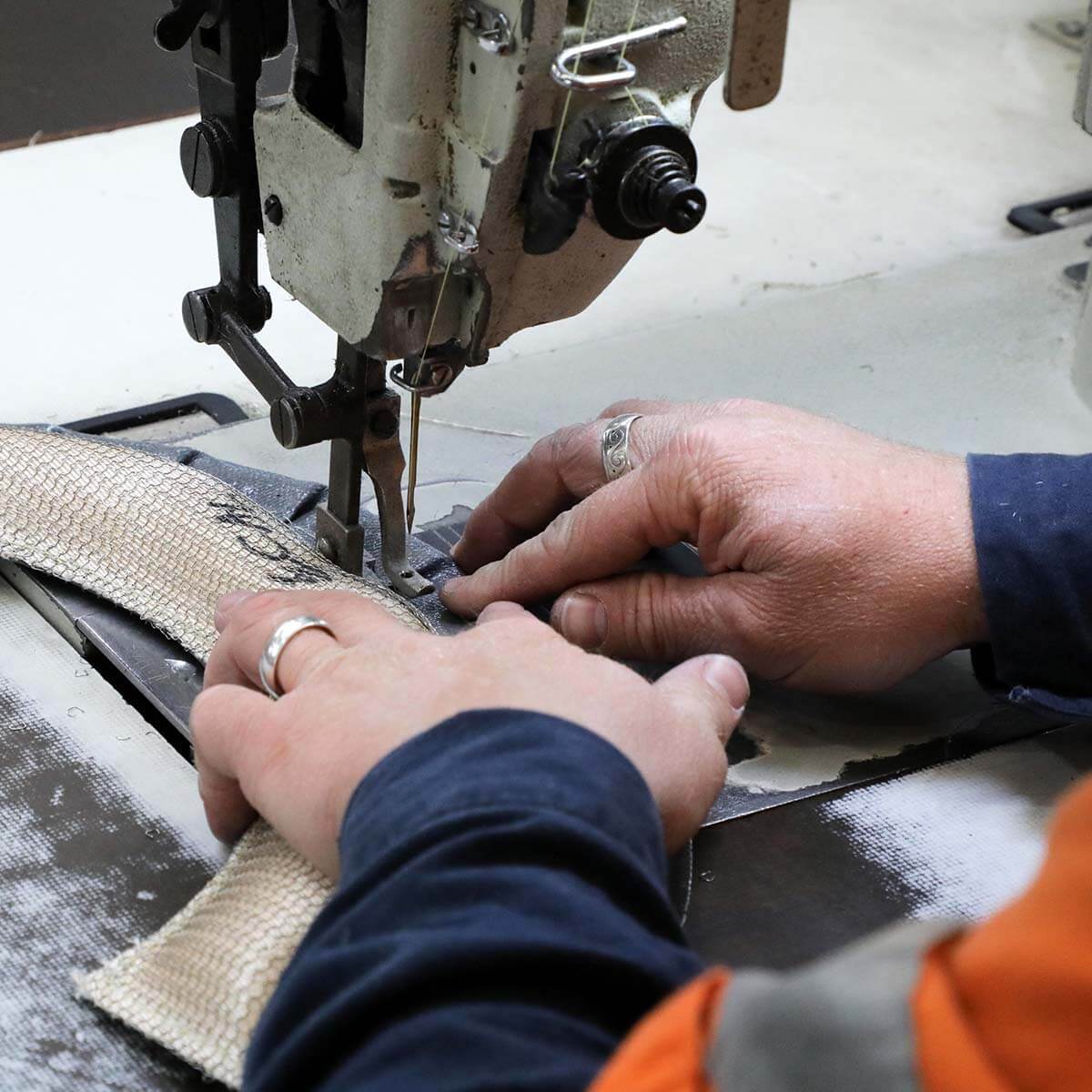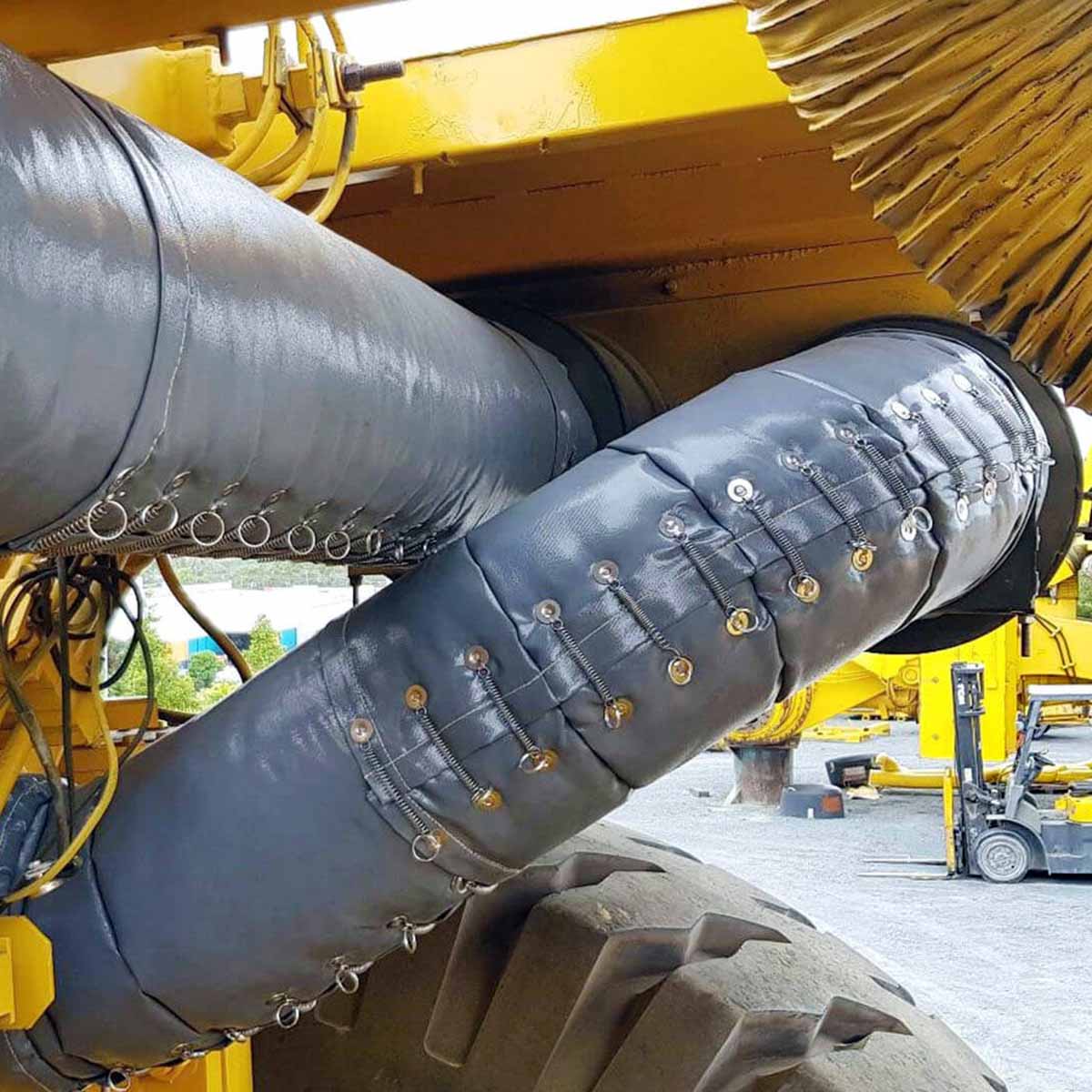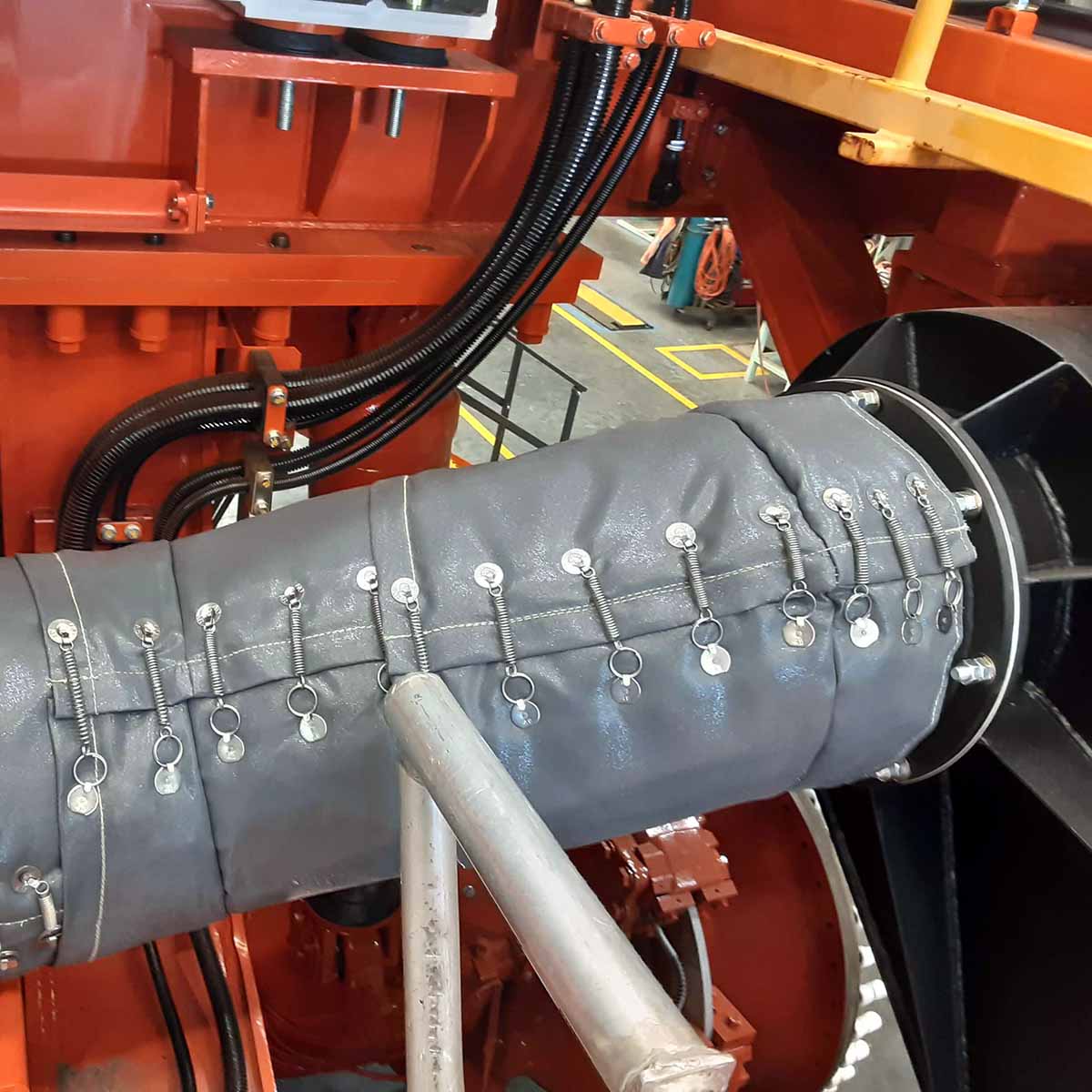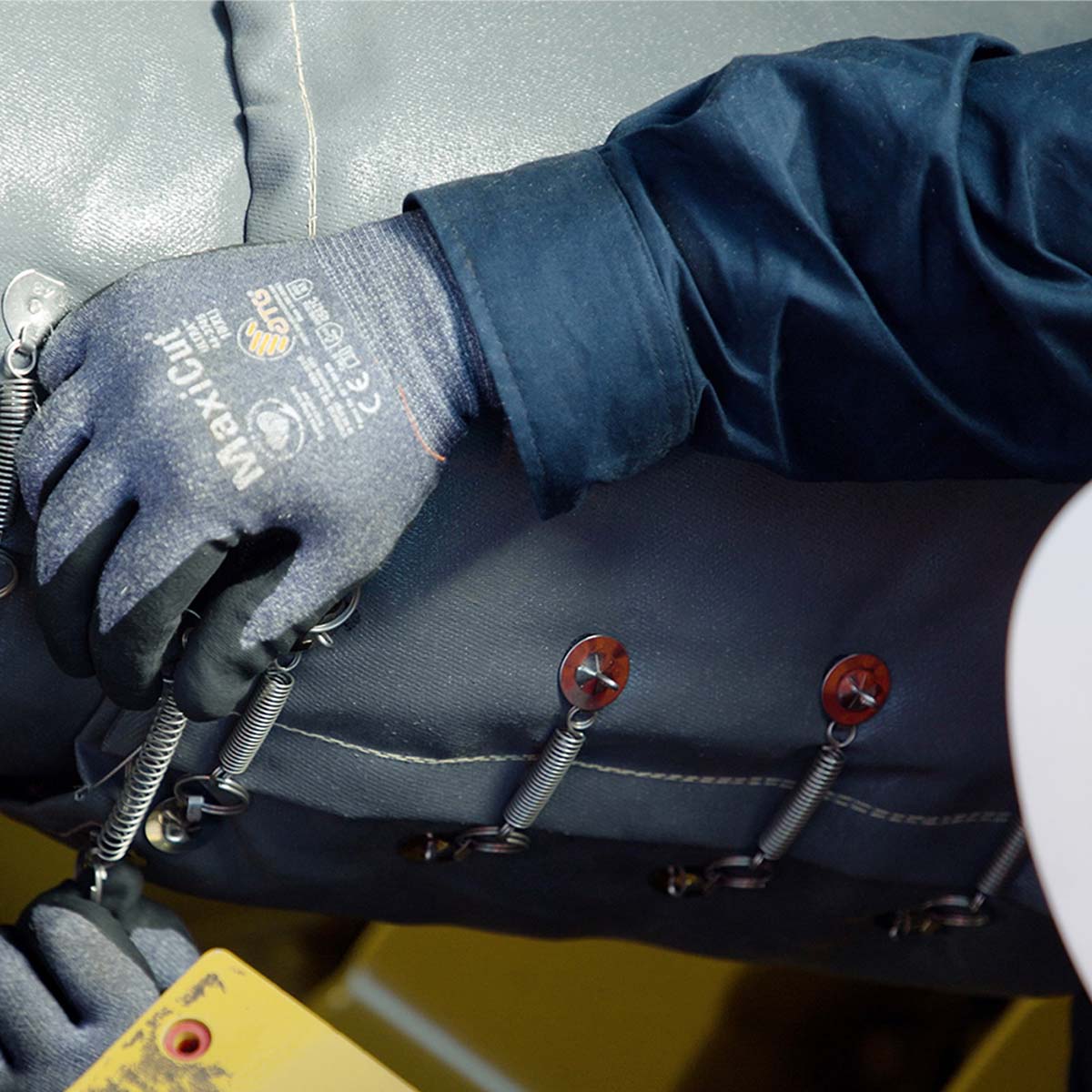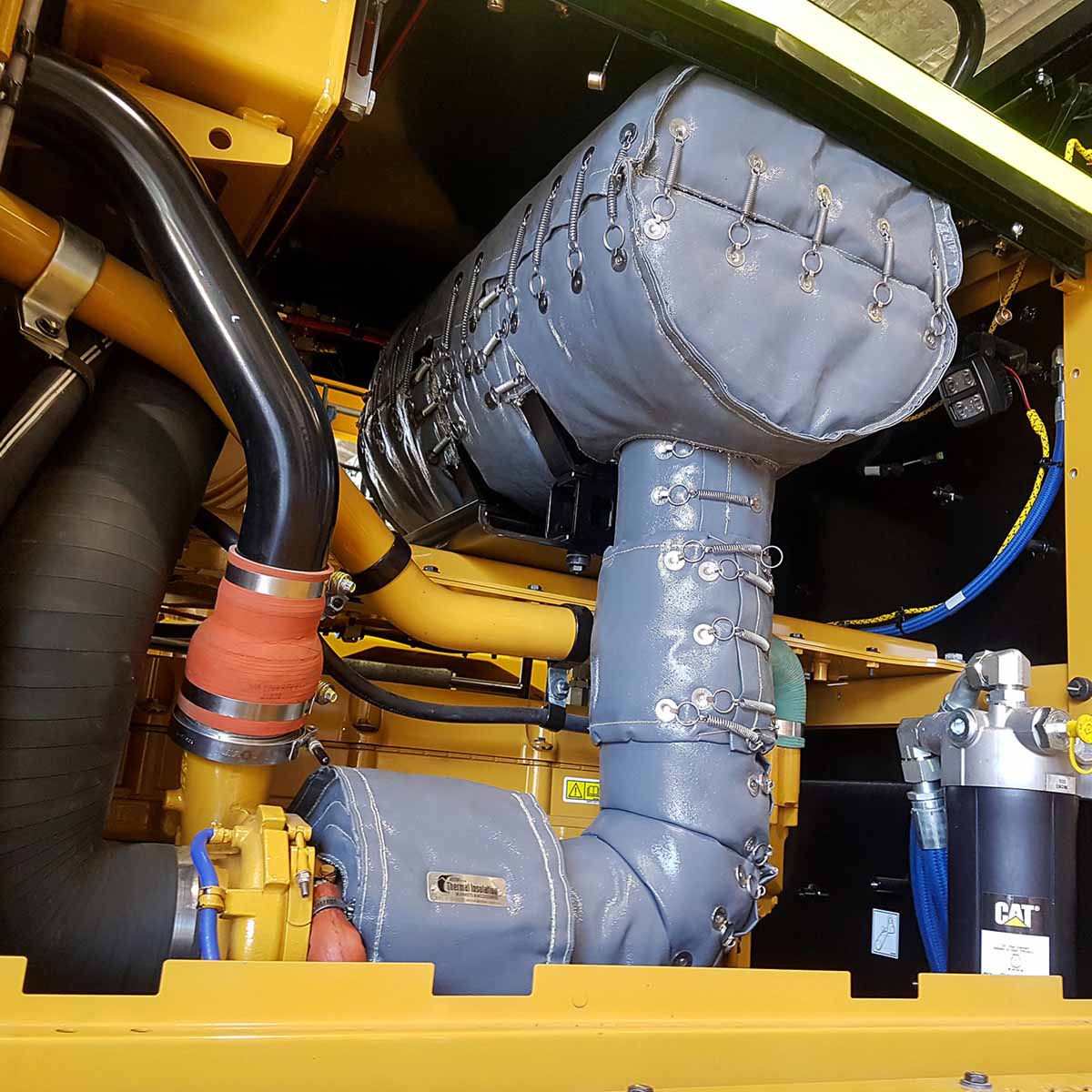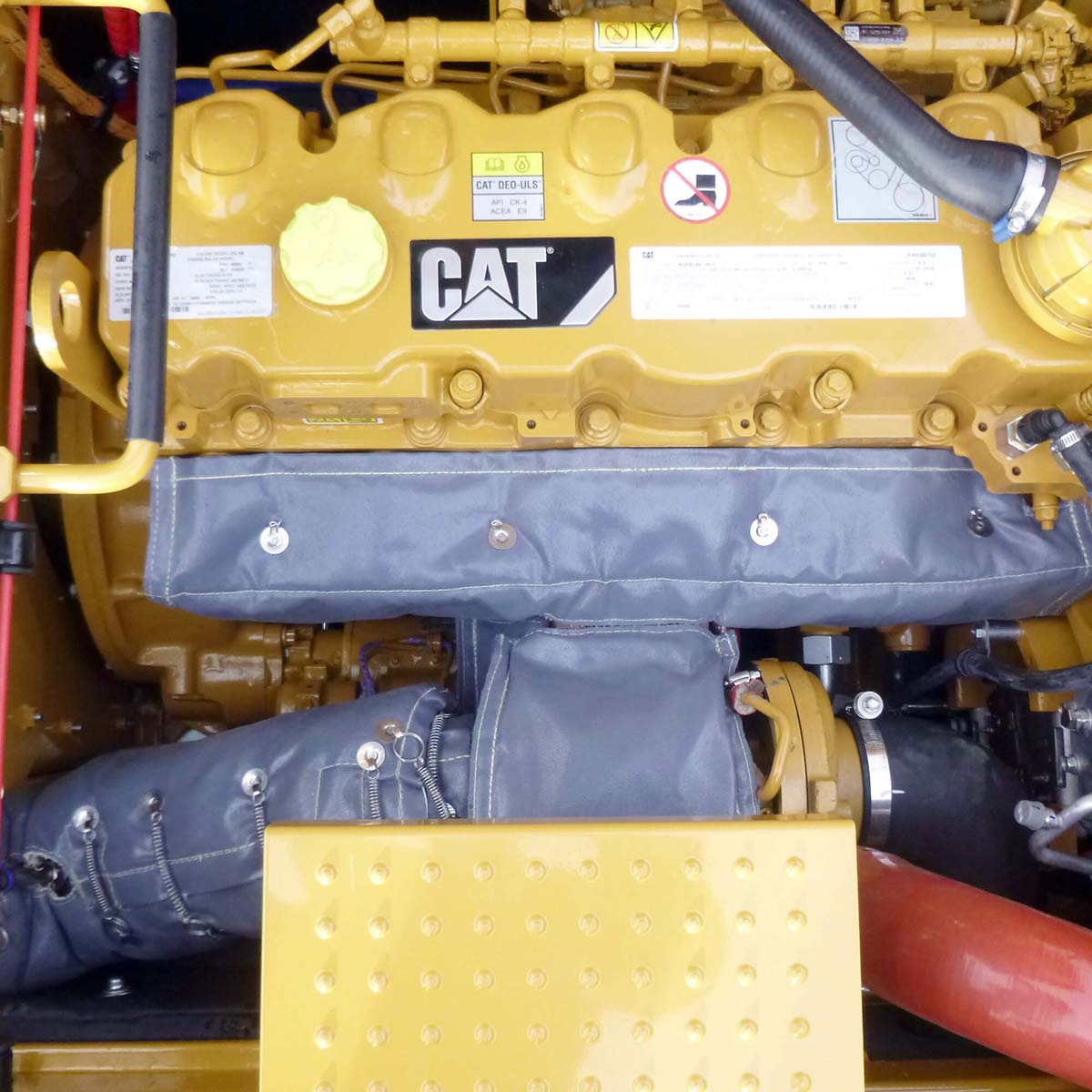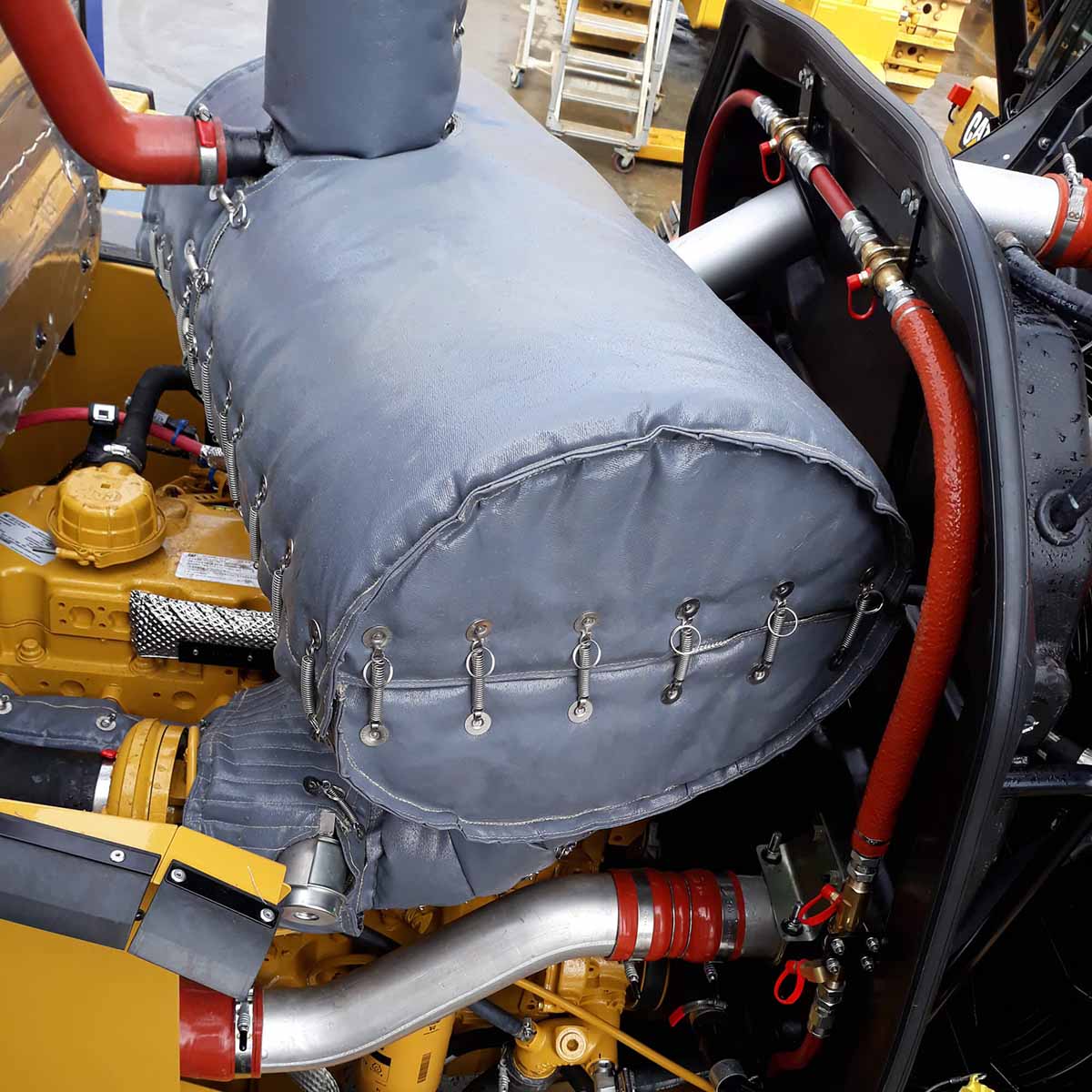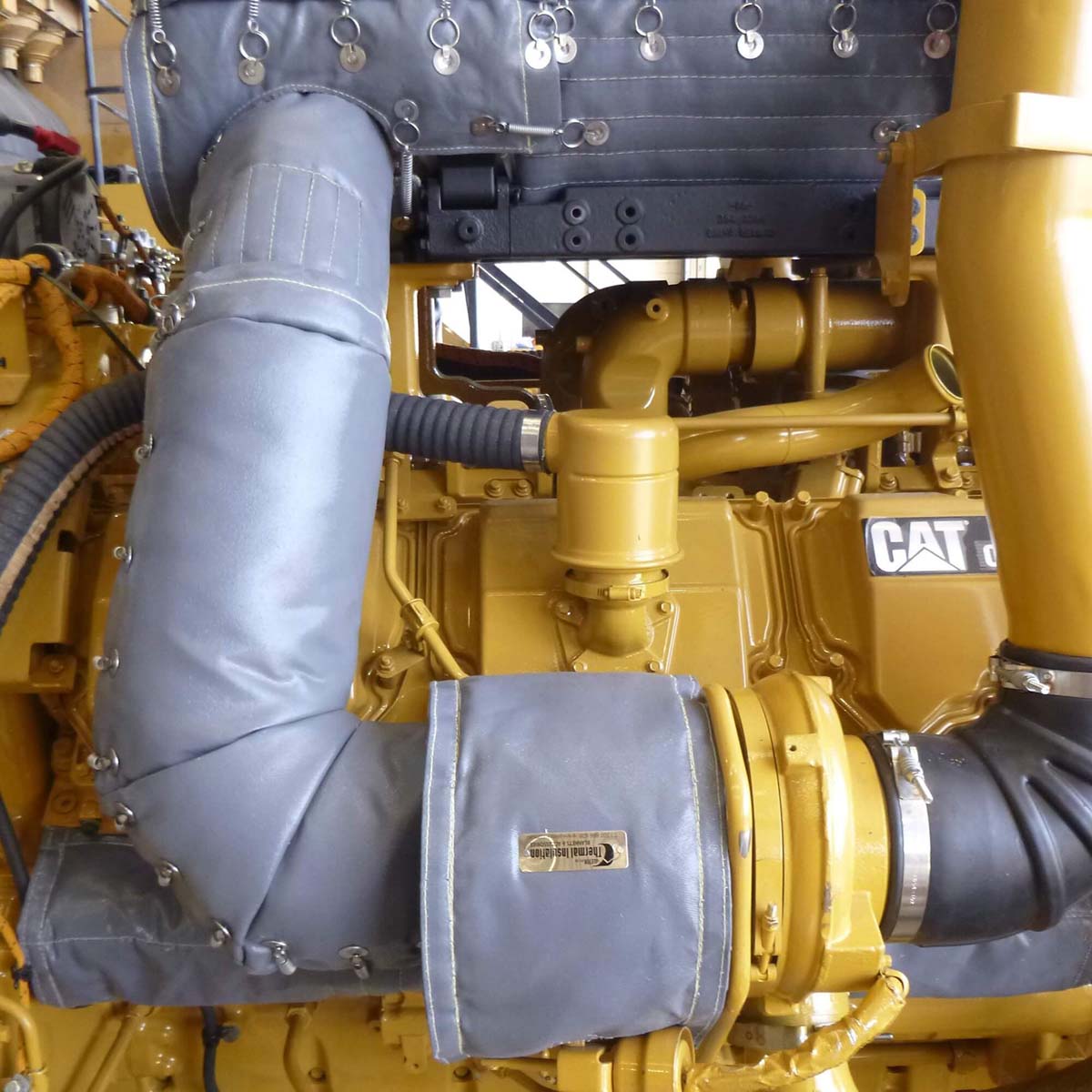Mobile equipment engine fire causes
Maintenance problems increase the risk of engine fires. Ruptured fuel lines, turbo malfunctions, and insufficient engine safeguards can cause fires. An analysis¹ of mobile equipment fires identified blanket-related problems.
- Poor maintenance, such as not replacing oil-soaked blankets, and poor fitments
- Fuel line and hose failures
- Failures of turbos and burst oil lines
- Unshielded engines (no lagging)
Implementing an Asset Protection Program that employs appropriate fire mitigation strategies is essential to safeguard heat-critical engine parts. Aletek can support with MDG 15 and AS 5062 fire mitigation compliance.
Lagging prevents engine fires
Thermal insulation blankets create a barrier between fuel sources and superheated parts in engine bays, providing mining fire protection. To maintain a controlled physical barrier, thermal fire protection must be installed correctly with sufficient surface coverage and minimal gaps.
Surface temperatures of heat-critical components can be cooled below their ignition points using thermal lagging. Based on MDG 15 guidelines², a maximum temperature of 150°C is recommended. Designed to minimise fire hazards, Aletek’s thermal blankets are engineered for durability.
Your last line of defence?
Experienced fitters should install blankets. A well-defined maintenance program should accompany blanket installations. Maintenance activities include replacing deteriorating blankets, refitting blankets if necessary, and assessing blanket health. Aletek offers thermal audit solutions for your mining fleet. For maintenance recommendations that prevent engine fires, check out our Blankets User Guide.
Lagging-related fire regulations
Lagging and engine fire guidelines and standards:
Mobile Equipment Fires Bulletin (Qld)
Lagging related fire causes from the report:
- Trucks and Dozers – turbo fires due to mechanical failure and cracked oil feeds, oil-soaked lagging
- Drill rigs – lack of engine shielding / thermal fire protection
- Rupturing of hydraulic hoses or fuel lines causing turbo fires
- 20% of fires started after maintenance, eg. reinstalling oil-soaked lagging or hotspots from poor lagging fitment
Resources Regulator guidelines for mobile equipment:
MDG 15 Guideline (NSW)
- 4.1 Control engine surface temperatures to prevent hot surface ignition of escaped hydraulic oil, diesel fuel, and engine coolant.
- Typically, manifolds, turbos, exhaust pipes and mufflers have the highest temperatures
- Use lagging to control surface temperatures
- 4.4 Implement control measures to mitigate pipe, line, and hose failure risks.
- C) Shield components with an operating surface temperature over 150°C
Fire mitigation for mobile equipment:
AS 5062:2016 Standard
- 1.10 Eliminate fuel accumulation areas. Fire risk reduction measures include thermal blankets.
- 2.2.1 Maintenance activities should include controls to reduce fire risks. During maintenance, inspect for: (d) Missing, damaged, or poorly fitted lagging.
- 2.2.3 – Inspect and maintain areas where combustible or flammable materials may accumulate. Included are thermal blankets.
